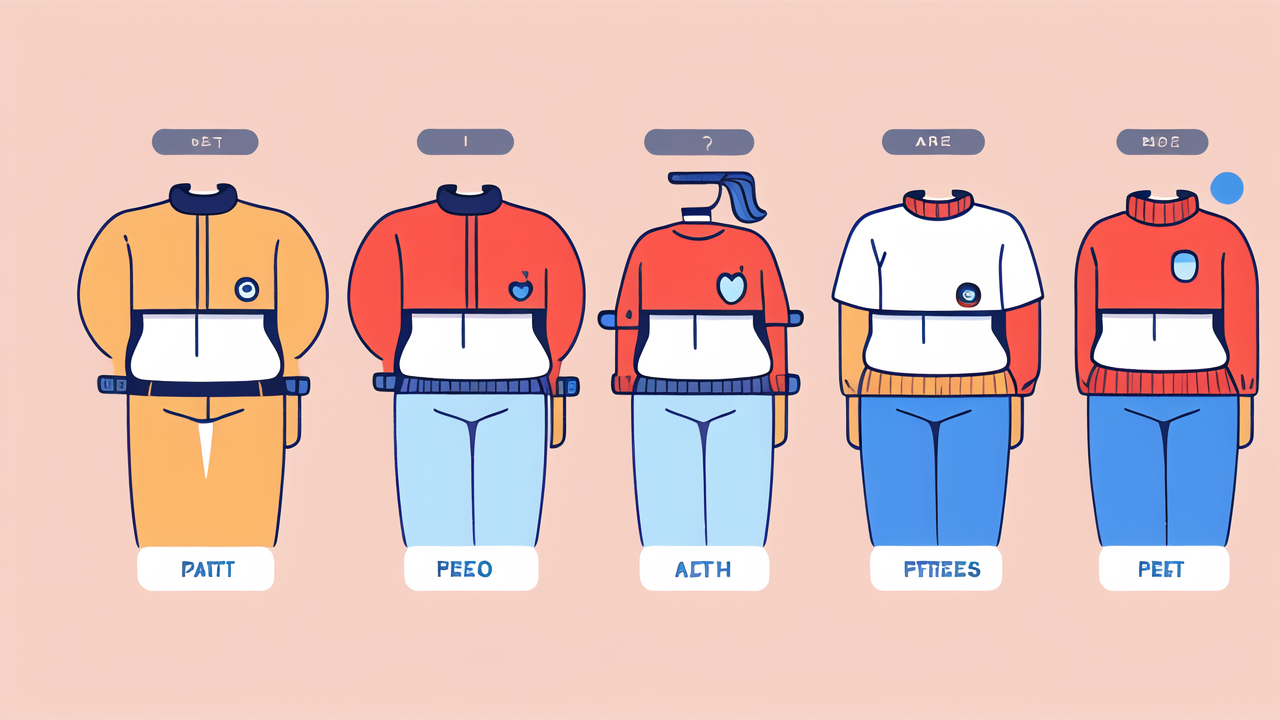Understanding the Pulsepro Smart Watch: Features and Innovations
The Technology Behind Pulsepro's Heart Rate Monitor
The Pulsepro smart watch uses cutting-edge technology for its heart rate monitor. It employs optical sensors that detect blood flow changes. This method is known as photoplethysmography (PPG).

The watch emits green LED light into the skin. Blood absorbs this light. The sensor then measures the reflected light. This data is used to calculate heart rate.
Pulsepro's algorithm processes this data in real-time. It filters out noise and movement artifacts. This results in accurate heart rate readings, even during intense workouts.
The watch also uses machine learning to improve accuracy over time. It adapts to each user's unique physiology. This personalized approach sets Pulsepro apart from other fitness trackers.
Advanced Metrics: Beyond the Basics of Body Tracking
Pulsepro goes beyond simple step counting and calorie tracking. It offers a range of advanced metrics for comprehensive body measurement.
- Sleep quality analysis
- Stress level monitoring
- Blood oxygen saturation (SpO2) measurement
- Electrocardiogram (ECG) readings
- Body composition analysis
These features provide users with a holistic view of their health. The sleep quality analysis tracks sleep stages and patterns. This helps users optimize their rest.
Stress level monitoring uses heart rate variability data. It alerts users when stress levels are high. The SpO2 sensor measures blood oxygen levels. This is crucial for overall health and fitness performance.
The ECG feature can detect irregular heart rhythms. This early warning system can be life-saving. Body composition analysis estimates body fat percentage and muscle mass.
User Experience: How Pulsepro Stands Out in the Smart Watch Market
Pulsepro's user interface is intuitive and user-friendly. The watch face is customizable to display preferred metrics. This allows users to focus on what matters most to them.
The companion app provides detailed insights and trends. It presents data in easy-to-understand graphs and charts. Users can set goals and track progress over time.
Pulsepro's battery life is impressive, lasting up to 7 days on a single charge. This longevity ensures continuous tracking without frequent interruptions.
The watch is water-resistant up to 50 meters. This makes it suitable for swimming and other water activities. Its durable design withstands daily wear and tear.
Pulsepro integrates with popular fitness apps. This allows users to sync data with their preferred platforms. The seamless ecosystem enhances the overall user experience.
The Impact of Wearable Fitness Trackers in the United States
Trends in Fitness Wearables: A Growth Analysis
The wearable fitness tracker market in the US has seen explosive growth. In 2020, over 80 million Americans used a wearable device. This number is expected to reach 100 million by 2025.

Key factors driving this growth include:
- Increasing health awareness
- Rise in chronic diseases
- Advancements in sensor technology
- Integration with smartphones and apps
The COVID-19 pandemic accelerated this trend. People became more health-conscious and invested in personal fitness devices.
Smartwatches like Pulsepro are leading the market. They offer more features than basic fitness bands. The ability to track multiple health metrics appeals to a wide range of users.
Enhancing Lifestyle and Health: Consumer Success Stories
Wearable fitness trackers have transformed many lives. Users report increased motivation to exercise and make healthier choices.
Sarah, a 35-year-old office worker, credits her Pulsepro watch for her weight loss journey. The daily step count feature encouraged her to move more. She lost 20 pounds in six months.
John, a 50-year-old with high blood pressure, uses his watch to monitor stress levels. He practices deep breathing when alerted to high stress. This has helped him manage his condition better.
Many users appreciate the sleep tracking feature. It has helped them improve their sleep habits. Better sleep quality leads to increased daytime productivity and overall well-being.
The community aspect of fitness apps connected to these devices is also popular. Users can share achievements and compete with friends. This social element adds fun and motivation to fitness routines.
Regulatory Landscape: How the US Adapts to Wearable Tech
The US regulatory landscape for wearable tech is evolving. The FDA has created guidelines for mobile medical applications. This includes some features of smart watches.
Devices that claim to diagnose or treat medical conditions face stricter scrutiny. For example, ECG features require FDA clearance before marketing.
Privacy is a major concern with wearable tech. The Health Insurance Portability and Accountability Act (HIPAA) protects health data. Companies must ensure user data is secure and properly handled.
The FDA encourages innovation while ensuring consumer safety. They have introduced the Digital Health Software Precertification Program. This aims to streamline the approval process for low-risk digital health products.
As technology advances, regulations will likely adapt. The goal is to balance innovation with consumer protection. This dynamic landscape presents both challenges and opportunities for companies like Pulsepro.
Future Directions: What Pulsepro Teaches Us About Smart Wearables
Integrating AI and Machine Learning in Future Devices
Artificial Intelligence (AI) and Machine Learning (ML) are set to revolutionize smart wearables. Pulsepro's current use of ML for heart rate accuracy is just the beginning.

Future devices may use AI to:
- Predict health issues before they occur
- Provide personalized fitness recommendations
- Detect anomalies in vital signs
- Adjust device settings based on user behavior
ML algorithms will continuously improve as they gather more data. This will lead to more accurate and personalized health insights.
AI could also enhance the user interface. Voice assistants may become more prevalent in smart watches. This would allow for hands-free operation and more natural interactions.
The integration of AI and ML will make smart wearables more proactive. They will evolve from passive trackers to active health management tools.
The Importance of Privacy and Security in Wearable Technology
As smart wearables collect more sensitive health data, privacy and security become crucial. Users need to trust that their personal information is protected.
Pulsepro and other companies must invest in robust security measures. This includes:
- End-to-end encryption of data
- Secure cloud storage
- Regular security audits
- Transparent privacy policies
Biometric authentication, like fingerprint or heart rhythm recognition, may become standard. This would add an extra layer of security to device access.
User control over data sharing will be essential. Devices should allow granular control over what data is collected and shared. Clear consent processes for data usage will build trust with consumers.
As regulations evolve, companies must stay compliant. This may involve regular updates to privacy policies and security protocols.
Predicting the Next Big Thing in Smart Fitness Wearables
The future of smart fitness wearables is exciting and full of possibilities. Based on current trends, we can anticipate several developments:
- Non-invasive glucose monitoring for diabetics
- Hydration level tracking
- Advanced emotion recognition
- Integration with smart home devices
- Improved battery life through energy harvesting
Wearables may expand beyond the wrist. Smart clothing with embedded sensors could provide more comprehensive body tracking.
Augmented reality (AR) could be integrated into smart glasses. This would display real-time fitness data during workouts.
The focus will likely shift from fitness to overall wellness. Mental health tracking and stress management will become more sophisticated.
As technology advances, smart wearables will become more seamlessly integrated into our lives. They will continue to empower users to take control of their health and fitness.




Leave a comment
This site is protected by hCaptcha and the hCaptcha Privacy Policy and Terms of Service apply.